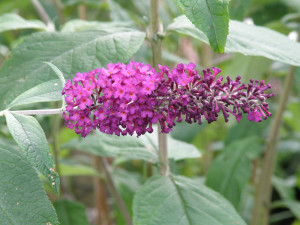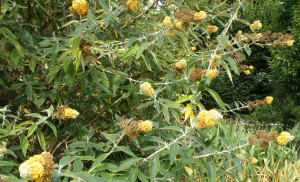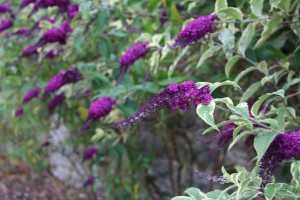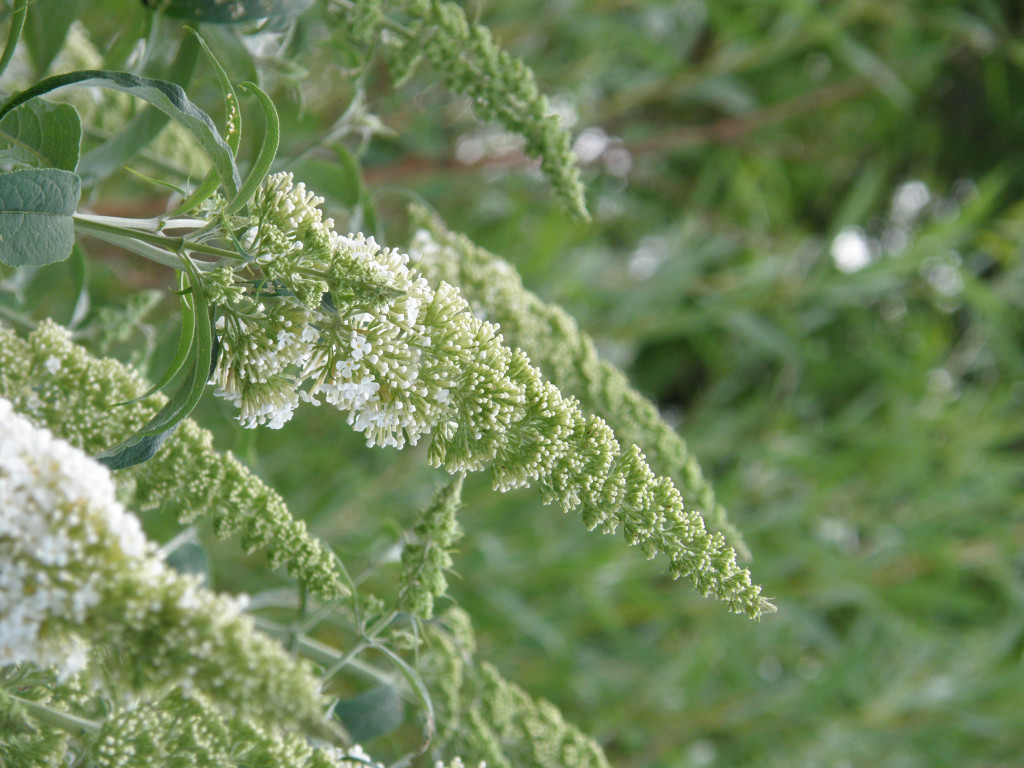Buddleja davidii Franch.is a popular garden shrub which has escaped cultivation to become established as a naturalised plant in the wild, where it can often be found on waste ground around towns and cities. It will grow happily in most garden soils and can even be seen growing out of cracks in masonry on buildings. It does prefer a sunny position as none of the buddlejas do well in shade. It grows well in even poor soil sending up long arching branches which are topped by the flowers in ranged in a cyme in late summer. Being a late flowering shrub it responds to early spring pruning and when pruned hard in March it produces far more flowers. These flowers give it its common name of butterfly bush as there strong scent is irresistible to butterflies.
Its ease of cultivation and natural variability has lead to a host of named varieties being selected and introduced varying from white through to purples and very dark blues. The RHS plant finder currently lists 121 different ones, including some which are forms of Buddleja x weyeriana – a hybrid between B. davidii and B. globosa.
The genus Buddleja L. was named by Carl Linnaeus in ‘Species Plantarum’, naming it after the Reverend Adam Buddle but of reasons unknown he spelt it with a “j” when strictly speaking it should be spelt with an “i”. This has lead to considerable confusion over the
years but as he repeatedly spelt it this way that is how it should be spelt. The only Buddleja known to Linnaeus was B. Americana L.which William Houstoun had sent back to Europe from the Americas and even then the spelling was causing confusion as in one of his illustrations he spelt it incorrectly both times even though he attributes the naming to Linnaeus. The species B. davidii itself was first sent back to Europe from China by the French Catholic missionary Armand David having found it in August of 1869 and Adrien René Franchet working in the herbarium of the natural history museum in Paris published a description of it in 1887 naming it in after the discoverer.
References:
Species Plantarum by Carl Linnaeus
Hillers Manual of Trees and Shrubs
Excursion flora of the British Isles by Clapham et al
Nouvelles Archives Du Muséum D’Histoire Naturelle series 2
Reliquiae Houstounianae sive Plantarum in America meridionale … Collectarum Icones by William Hostoun
The International Plant Names Index (2012). Published on the Internet http://www.ipni.org [accessed 12th December 2012]
Tropicos, botanical information system at the Missouri Botanical Garden – www.tropicos.org [accessed 12th December 2012]
The Royal Horticultural Society Horticultural Database’, available at www.rhs.org.uk [accessed 12th December 2012]







